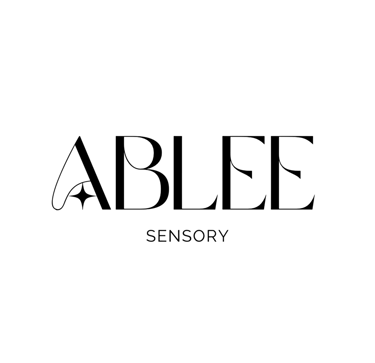Sensory Play and Water
How Sensory Integration Can Build Water Confidence
Ablee Sensory
3 min read


For many children, the unique sensations of water-the feeling, the sound, the movement—can be overwhelming. This is especially true for children with sensory processing differences. However, by incorporating sensory play and understanding sensory integration strategies, we can gently guide children to build comfort and confidence in aquatic environments.
Understanding Water's Sensory Impact
Water presents a rich, multi-sensory environment that can be stimulating, but also daunting, for children:
Tactile (Touch): The feeling of water on the skin, temperature changes, the sensation of submersion, water pressure.
Auditory (Sound): Splashing, echoing sounds in a pool, sounds underwater can be distorted or loud.
Visual (Sight): Reflections, distorted vision underwater, glare from the sun on water.
Proprioceptive (Body Awareness): The buoyancy of water changes how the body feels and moves, requiring more effort or feeling less stable.
Vestibular (Balance & Movement): Floating, moving through water, and the disorientation of being submerged can affect balance and spatial awareness.
For children who are hypersensitive to certain inputs, or who struggle to process multiple sensations at once, water environments can quickly become overwhelming, leading to anxiety or avoidance.
What is Sensory Integration and How it Helps with Water?
Sensory integration is the neurological process of organising sensations from one's own body and from the environment, making it possible to use the body effectively within the environment. When this process is challenging, activities like swimming can feel chaotic.
Sensory play in water helps by:
Gradual Exposure: Introducing water sensations in controlled, playful ways.
Desensitisation: Helping the child's nervous system gradually get used to overwhelming sensations.
Organisation: Providing tools and activities that help the child make sense of what they are feeling, hearing, and seeing in the water.
Positive Association: Replacing negative feelings about water with fun, calming, and positive experiences.
Practical Sensory Play Strategies for Water Confidence
Here are ways to incorporate sensory play to build comfort:
Warm-Up Slowly: Before getting into a pool, let your child explore water in a shallower, warmer environment like a bath or a small paddling pool.
Focus on Tactile Input:
Pouring & Scooping: Use cups, buckets, and water wheels.
Water Exploration: Let them touch, splash, and feel the water with their hands and feet.
Vary Temperatures: Introduce different water temperatures in small bowls for hand play (ensure safety).
Address Auditory Sensitivities:
Gentle Noises: Encourage quiet splashing or humming.
Ear Protection: Consider sensory-friendly ear covers to reduce overwhelming sounds.
Underwater Sounds: Introduce sounds underwater gradually, like simple tapping.
Visual Engagement:
Floating Toys: Use colourful, floating toys to draw attention and encourage reaching.
Goggles: Introduce goggles early to help clarify underwater vision and reduce stinging eyes.
Proprioceptive & Vestibular Input:
Gentle Bobbing: Support your child while gently rocking or bobbing to help them feel the water's buoyancy.
Resistance Play: Use toys that offer resistance when pushed or pulled through the water.
Deep Pressure: A gentle squeeze or hug in the water can provide calming deep pressure input.
How the Ablee Sensory Kit Supports Sensory Integration in Water
Our Water Confidence Kit is thoughtfully designed with sensory integration principles in mind, providing tools that complement these strategies:
Breathing Ball: Offers tactile and visual input for breathing exercise.
Ear Covers Headband: Addresses auditory sensitivities, reducing overwhelming sounds and preventing water in the ears, which can be a significant sensory barrier for many children.
32 Tiered Flashcards + over 50 pages Parents Guidebook: Provides a play-based, visual, and structured approach to water acclimation, helping children anticipate and process new sensations step-by-step. It empowers parents to guide sensory exploration at the child's own pace, building predictability and comfort.
Conclusion
Embracing sensory play is a powerful way to help children overcome water anxiety and build lasting water confidence. By understanding the unique sensory challenges water presents and providing gentle, supportive experiences, we can transform fears into positive associations. Integrating sensory strategies makes the journey to water familiarity smoother, more enjoyable, and ultimately, safer.
Ready to start your child's sensory-informed water confidence journey? Explore the Ablee Sensory Water Confidence Kit and discover tools specifically designed to make every splash a step towards calm and joyful water exploration.
© 2025 Ablee Sensory. All rights reserved.
Ablee Sensory acknowledges the Traditional Owners and Custodians of the lands across Australia on which we live and work. We pay our respects to their Elders past and present, and extend that respect to all Aboriginal and Torres Strait Islander peoples
